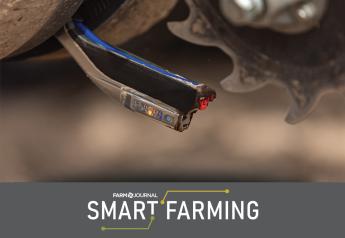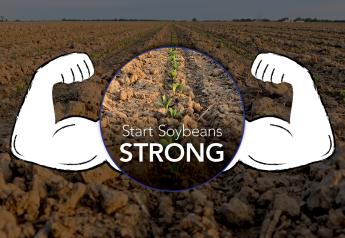Evaluate Ear and Stand Counts as the Replanting Window Narrows
Corn crops are in a variety of growth stages across the Heartland. Some crops are already several inches tall and rapidly growing while in other fields, due to replanting, the corn is just starting to emerge. In central Illinois, roller-coaster weather conditions have resulted in fields that have both scenarios in play, and that could be a problem, says Farm Journal Field Agronomist Ken Ferrie.
“Let’s say the farmer planted 36,000 seeds per acre and when you did a stand count in a thousandth of an acre you got 27,000 emerged plants that are at one-and-a-half collars. Then there’s another 8,000 plants still struggling to get out of the ground. These plants are going to be weeds,” Ferrie explains. “They won’t put on an ear.”
Worse yet, the “weeds” will affect how well the corn crop in that field can expand, or flex, its ears. Ferrie says a good flex hybrid can flex as much as 10 bushels per 1,000 plants, but a hybrid’s ability to flex will be reduced if it’s next to a late-emerging corn plant that’s robbing it of sunlight and nutrients.
“What you’re looking at in this field is 160-bushel to 180-bushel corn, and that won’t cash flow if your financials are set up for 230-bushel corn,” Ferrie says.
What to do? Muster the courage to tell the grower to tear up that field and replant. And do it soon, as the planting window is beginning to tighten.
“I’m telling farmers here if we tear up and replant right now (on May 19), we’re at 90% of our yield expectations,” Ferrie says. “If we wait, by first of June, we’re down in that 65% to 70% of expectation, and now our opportunity to improve yield by replanting is slipping away from us.”
Ferrie says he is pushing his customers to make quick decisions, given the timing. “We don’t want our farmers to drag their feet and then get caught in another rain.”
Run the Numbers. Ferrie emphasizes that the ultimate decision on whether to keep a crop in the field or tear it out needs to be based on ear and stand counts. “Get actual numbers to take the emotion out of the decision,” Ferrie says. “Look at how many plants there are in multiple places in the field. Determine how many plants are behind within that set.”
In scenarios where the grower would benefit from ripping out the crop but is unwilling to, try to convince him to tear out and replant a portion of the field. That will enable you to compare yield results from both areas at harvest.
“Whatever you do, don’t plant another 20,000 seeds in a stand with 14,000 plants,” Ferrie advises. “Farmers think that will add to their stand and ear counts, but it never works.”
Here are additional considerations to discuss and evaluate with growers between now and early June.
Evaluate ponded areas. Here in mid-May, growers can still replant drowned-out spots as well as the 50- to 100-foot “halos” that typically encircle ponded areas. However, if the grower is replanting in early June, Ferrie advises keeping the halos as they are and planting soybeans or another crop in the ponded areas to prevent weeds from taking them over. “We usually just plant the beans thick at a 200,000 population in narrow rows and use them for weed control,” he says.
Focus on results. Telling a grower to rip out a field of corn and replant it isn’t for the faint of heart. Help the grower see the value in this decision, based on dollars and cents.
“If yield potential is only 155 bushels for that field, and the crop’s insured for 180 bushel, he might decide to not stick more money into that crop,” Ferrie notes. “We never walk away from a crop, but we have to make decisions about how we manage it based on the financials.”
He adds that once the crop’s yield potential is determined, growers are only protecting that potential between now and harvest—not adding to it.
That fact means the farmer and retailer need to make every agronomic decision—for fungicides, insecticides and herbicides--through a different lens than one that was based originally on a 250-bushel yield potential.
“A retailer that can help the farmer maneuver through those kinds of decisions is worth his weight in gold in a year like this,” Ferrie says. “Years like this can earn you a lot of customer loyalty.”







